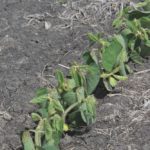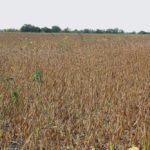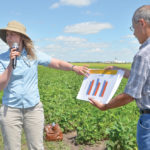
Tag Archives Province/State: Manitoba

Good potato yields despite challenging year
A dry summer required a lot of irrigation and was followed by a dry fall that delayed digging

Students tap into water knowledge
Students tackled water health and conservation at the latest Southwest Manitoba Water Festival September 20 near Elgin, Man.

Can organic no till work in the field?
Environmental benefit is part of organic market value, but organic weed management usually means tillage, commonly considered a black mark for soil health. Is there a middle ground?

Arkansas moving closer to in-crop dicamba restrictions
Its plant board wants an April 15 to Oct. 31 ban to prevent injury to crops from drift

4-H beef program aims at breeding over butchering
A small number of 4-H’ers in the Interlake are turning their heifer projects into purebred herds

Pre-harvest glyphosate on soybeans?
Yes, no or maybe — it really all depends on the weeds

PHOTOS: This Old Elevator: September 2017
The Manitoba Historical Society wants to gather information about all the grain elevators in Manitoba
Forecast: Mild and dry weather returns
Issued September 25, 2017: Covering the period from September 27 to October 4
Sclerotinia seen in canola, aphid populations rise in soybean crops
Manitoba Insect & Disease Update for August 16

To till or not to till? For soybeans that’s the question
The Westman Agricultural Diversification Organization is testing out planting dates and pre-seed tillage systems in its latest round of soybean experiments



